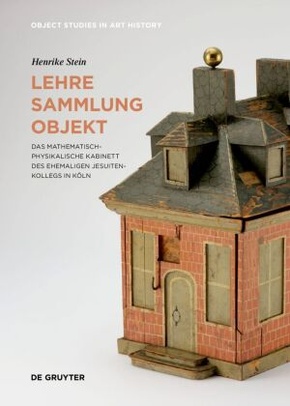Lehre - Sammlung - Objekt - Das Mathematisch-Physikalische Kabinett des ehemaligen Jesuitenkollegs in Köln
| Verlag | De Gruyter |
| Auflage | 2024 |
| Seiten | 532 |
| Format | 24,3 x 17,6 x 3,8 cm |
| Gewicht | 1442 g |
| Reihe | Object Studies in Art History 8 |
| ISBN-10 | 3689241308 |
| ISBN-13 | 9783689241308 |
| Bestell-Nr | 68924130A |
Die Kölner Jesuiten sammelten bereits im 17. Jahrhundert naturwissenschaftliche Instrumente und nutzten diese in ihrem Unterricht an dem zur Artistenfakultät der alten Kölner Universität gehörenden Gymnasium Tricoronatum. In der französischen Zeit Kölns um 1800 erlebte das Kabinett eine Blütezeit und wurde auf bis zu 1.300 Instrumente erweitert. Hier bereitete Georg Simon Ohm seine bedeutende Entdeckung vor, das Ohmsche Gesetz (1827). Vor dem Hintergrund der übergreifenden wissenschaftshistorischen Entwicklung hin zur modernen Naturwissenschaft hat das Kölner Mathematisch-Physikalische Kabinett diesen großen Wandel im Kleinen aktiv mitgestaltet.
Im Fokus der interdisziplinären Studie stehen die wechselvolle Sammlungsgeschichte von der Frühen Neuzeit bis heute, die Ausgestaltung anschaulicher und experimenteller Lehrpraktiken sowie die Objekte selbst, wobei das Kabinett in lokale und überregionale Kontexte eingeordnet wird.
Natural science collections were widespread in the early modern period. This volume focuses on the eventful collection history of the Chamber of Mathematics and Physics of the former Jesuit College in Cologne from its 17th-century beginnings to the present day. Political and (ecclesiastical) historical events influenced the organisation, function, and collection of instruments. As early as the 18th century, but more especially in the French period around 1800, the Jesuit collection developed into one of mathematics and physics, which Georg Simon Ohm later used to prepare for his important discovery of Ohm's Law. In the context of science's historical development towards modern natural science, the Cologne chamber played an active role, helping to shape this major transformation on a small scale.

